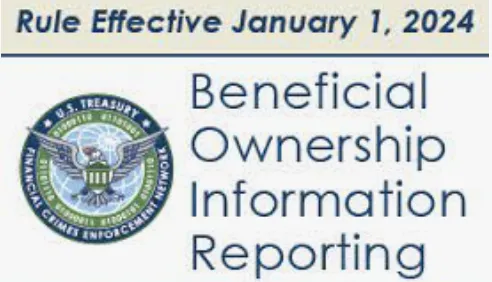Introduction
Have you ever wondered what exactly owner’s equity is and why it’s crucial for business owners? Well, here’s the scoop: Owner’s equity is like the value of your slice of the company pie. Whether you’re a sole proprietor or part of a corporation, it’s what’s left in the bank after subtracting all your debts from your assets. Imagine it as your financial superhero cape, swooping in to save the day when your business’s assets outweigh its liabilities.
For a deeper dive, we’ll break down what constitutes owner’s equity, why it’s not the same as an asset, and even how to calculate it. So, if you’re looking to be the master of your financial domain, read on and get savvy with owner’s equity!
Key Takeaways
- Owner’s equity represents the value of the owner’s stake in a company, calculated by subtracting liabilities from assets.
- Positive owner’s equity indicates the company has sufficient resources to cover its obligations and may have room for growth and investment.
- Negative owner’s equity occurs when a company’s liabilities exceed its assets, resulting in a deficit on the balance sheet. In other words, the company owes more than it owns, signifying potential financial trouble.
- The Statement of Owner’s Equity provides details on changes in equity over a specific period, including opening and closing balances, equity increases from profits or contributions, and decreases from losses or distributions.
- While owner’s equity offers insights, it’s just one factor in assessing a company’s financial health. A multifaceted approach combining shareholder equity with other tools and metrics is essential for comprehensive analysis and informed decision-making.
What is Owner’s Equity?
Owner’s equity is a key metric owners rely on to determine the value of their stake in a company. In sole proprietorships, it is referred to as “owner’s equity,” whereas in corporations, it is known as “shareholders’ equity.” Both terms essentially mean the same thing: what remains after subtracting the company’s liabilities from its assets. In layman’s terms, it refers to the ownership the owners or shareholders have in the business.
Owner’s equity may be positive or negative. Positive owner’s equity indicates that the company’s assets sufficiently cover its obligations, providing a buffer against potential financial risks. Negative owner’s equity, on the other hand, suggests that the company owes more than it owns, which can be a warning sign of financial trouble. Negative owner’s equity can result from sustained losses, excessive debt, or poor financial management, and it frequently necessitates corrective actions to restore the company’s financial health and stability.
How Do You Calculate Owner’s Equity?
Owner’s equity is typically computed using the following accounting equation:
Assets – Liabilities = Owner’s Equity
This formula illustrates the basic accounting rule stating that an organization’s total assets must equal its liabilities and owner’s equity. Owner’s equity represents the residual claim on the company’s assets after deducting (or paying) its liabilities.
Assets are the economic resources owned and controlled by the business and used in its daily operations, with the potential to produce future economic benefits. Assets include cash, receivables, inventory, machinery, and equipment. Assets can be categorized as current or non-current and tangible or intangible. On the other hand, liabilities are the obligations or debts that the business owes to external parties.
Here’s an example of how to calculate this:
ABC Company’s balance sheet as of March 31, 2024, shows the following balances: cash: $3.5 million; property: $1.5 million; furniture and equipment: $500,000; bank loan: $300,000; and unpaid salaries: $100,000.
Using the formula (Assets – Liabilities = Owner’s Equity), we know ABC Company has an owner’s equity of $5.1 million.
| Assets | – | Liabilities | = | Owner’s Equity |
| ($3,500,000 + $1,500,000 + $500,000) | – | ($300,000 + $100,000) | = | $5,100,000 |
| $5,500,000 | – | $400,000 | = | $5,100,000 |
Isn’t Owner’s Equity the Same as an Asset?
No – the company owns the assets, not the owners. It is a common misconception that business owners own everything in their company; however, some assets may have been acquired through means other than direct owner investments. Some assets, such as inventory or supplies, can be purchased with trade credit. This entails purchasing goods or services on credit from suppliers and paying for them later. Companies may also seek financing from banks or other financial institutions to acquire assets. Whatever remains of those assets after deducting the company’s liabilities can be claimed by business owners.
What Are the Components of Owner’s Equity?
- For Sole Proprietorships and Partnerships (Owner’s or Partners’ Equity):
- Capital Contributed by the Owner/s (+): Money or assets invested in the business by the owner or partners.
- Net Income or Loss (+/-): Net income represents the business’s profits after deducting expenses and taxes. Net loss occurs when expenses exceed revenues. Net income increases the owner’s equity, while net losses decrease the owner’s equity. In partnerships, net income or loss is allocated to the partners based on their ownership interest or partnership agreement.
- Owner’s Drawings (-): Withdrawals from the company by the owner or partners for personal use.
- For Corporations (Shareholders’ Equity):
- Outstanding Shares (+): Number of shares sold to investors that are still held by them and not repurchased by the company.
- Additional Paid-In Capital/APIC (+): Amount paid by an investor over the par value of a stock issued.
- Retained Earnings: Accumulated profits the company has earned and retained for reinvestment in the business.
- Dividends (-): A portion of the corporation’s net income given out to shareholders.
- Treasury Stocks (-): Stocks previously issued and repurchased by the issuing company.
What is the Statement of Owner’s Equity?
The Statement of Owner’s Equity is one of the reports companies must complete at the end of the fiscal year. It is a financial report that shows details on the changes or movements in the company’s equity within a specific period, which include:
- Opening balance of owner’s capital account
- Equity increases from profits or additional paid-in capital
- Equity decreases from losses or dividends/distributions/drawings
- Closing balance of owner’s capital account
For example:
ABC Company’s opening balance was $200,000, and its net income was $150,000. The company’s owners contributed an additional $50,000, and one withdrew $5,000.
Opening balance = $200,000
(+) Net Income $150,000
(+) APIC $50,000
(-) Owner’s Drawing $5,000
Closing balance = $395,000
In general, an increasing trend in owner equity per year indicates that the business is doing well, as long as the increase is due to profit earnings rather than additional contributions from the owners to keep the business running.
It is important to note that although owner’s equity can offer valuable insights into a company’s financial standing, it should not be considered the only factor determining its overall health. On the contrary, it is merely one component of a more comprehensive analysis that investors carry out to evaluate a company’s financial viability and performance. Investors can get a more precise and thorough picture of the company’s financial health by combining shareholder equity with other tools and metrics, using financial ratios, performing trend analysis, and benchmarking against industry peers. Investors can enhance their understanding of an organization’s financial health and arrive at more informed decisions by adopting a multifaceted approach to their analysis.
Why Do I Need to Know How to Calculate This?
Understanding and calculating owner’s equity is critical to assessing a company’s financial health. It is a fundamental metric in evaluating the extent of ownership and the company’s ability to cover its obligations. However, while this provides valuable information, it is just one piece of the financial puzzle. To get a complete picture of a company’s financial situation, look at other key metrics and financial indicators. Seeking a professional accountant or financial advisor guidance is always a good idea to ensure you have all your bases covered. It can be beneficial for making informed decisions and ensuring your business’s financial stability and success.
Consulting with Cleer Tax professionals can offer valuable expertise and perspective, helping you navigate complex financial matters and optimize your business’s performance.
Can Cleer Tax Assist Me in Preparing My Financial Statements, Including the Statement of Owner’s Equity?
Certainly! Our services extend to all-in-one monthly accounting packages that include monthly statements and the preparation of your federal and state tax returns. If you need help getting up to date on your books, we also offer support for companies that have fallen behind on their bookkeeping with our bookkeeping catch-up package.
If you have additional inquiries, schedule a consultation with one of our experienced tax professionals, or feel free to contact us.






